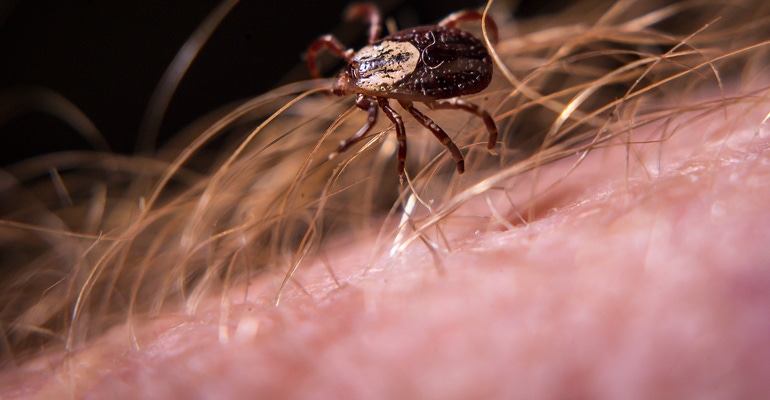
With ticks most active in the summertime, families need to know what to do if someone is bitten by the pest.
The best defense against ticks is a repellant containing at least 25 percent DEET, but no option is 100 percent effective.
In the event one, or a few, slip past the barrier of protection and attach, proper first aid involves a pair of tweezers, said Justin Talley, Oklahoma State University Cooperative Extension livestock entomologist.
“Whenever possible, use tweezers to remove ticks, and especially smaller ticks such as seed ticks or nymphs,” Talley said. “If tweezers aren’t available, adult ticks can be pulled out by hand slowly and steadily.”
To properly remove an attached tick, grasp it with tweezers and pull it out with slow and steady pressure. Do not twist the tweezers or yank the tick out.
Do not put any kind of substance or liquid such as Vaseline, bleach or alcohol on the tick.
“Putting substances on ticks can cause the tick to salivate more which could potentially increase the risk of the tick transmitting a pathogen,” Talley said.
Once removed, seal the tick in a plastic bag, write the date on the bag and save it in the event symptoms develop.
“We recommend keeping the tick for about a month,” Talley said. “That way, if you begin developing symptoms, you can tell your doctor you were bitten by this particular tick. That gives the doctor a lot of clues and helps direct the treatment.”
Removed ticks also can be washed down the drain or sealed in a plastic bag and put in the garbage.
“It’s important to dispose of ticks properly so you’re not just throwing them back out on your property. Even if you squeeze some of the blood out, those ticks can survive and lay eggs,” Talley said.
There is increased concern around tick-borne illnesses such as ehrlichiosis, tularemia, Bourbon Virus, Heartland Virus and Spotted Fever Group rickettsiosis, which includes Rocky Mountain Spotted Fever.
Anyone is at risk for being bitten by a tick, but people who are outside constantly, such as landscapers or cattle and horse owners and others in production agriculture, generally are at higher risk for tick-borne illnesses.
Unattached ticks can be brushed off the body or clothing.
For more information about ticks, contact the nearest county Extension office and download free OSU Fact Sheets on the topic, including EPP-7001, “Common Ticks of Oklahoma and Tick-Borne Diseases,” at facts.okstate.edu.
On this SUNUP segment, Justin Talley, Oklahoma State University Cooperative Extension livestock specialist, discusses how ticks affect humans. https://youtu.be/ISxp9k5TaIY
About the Author(s)
You May Also Like




